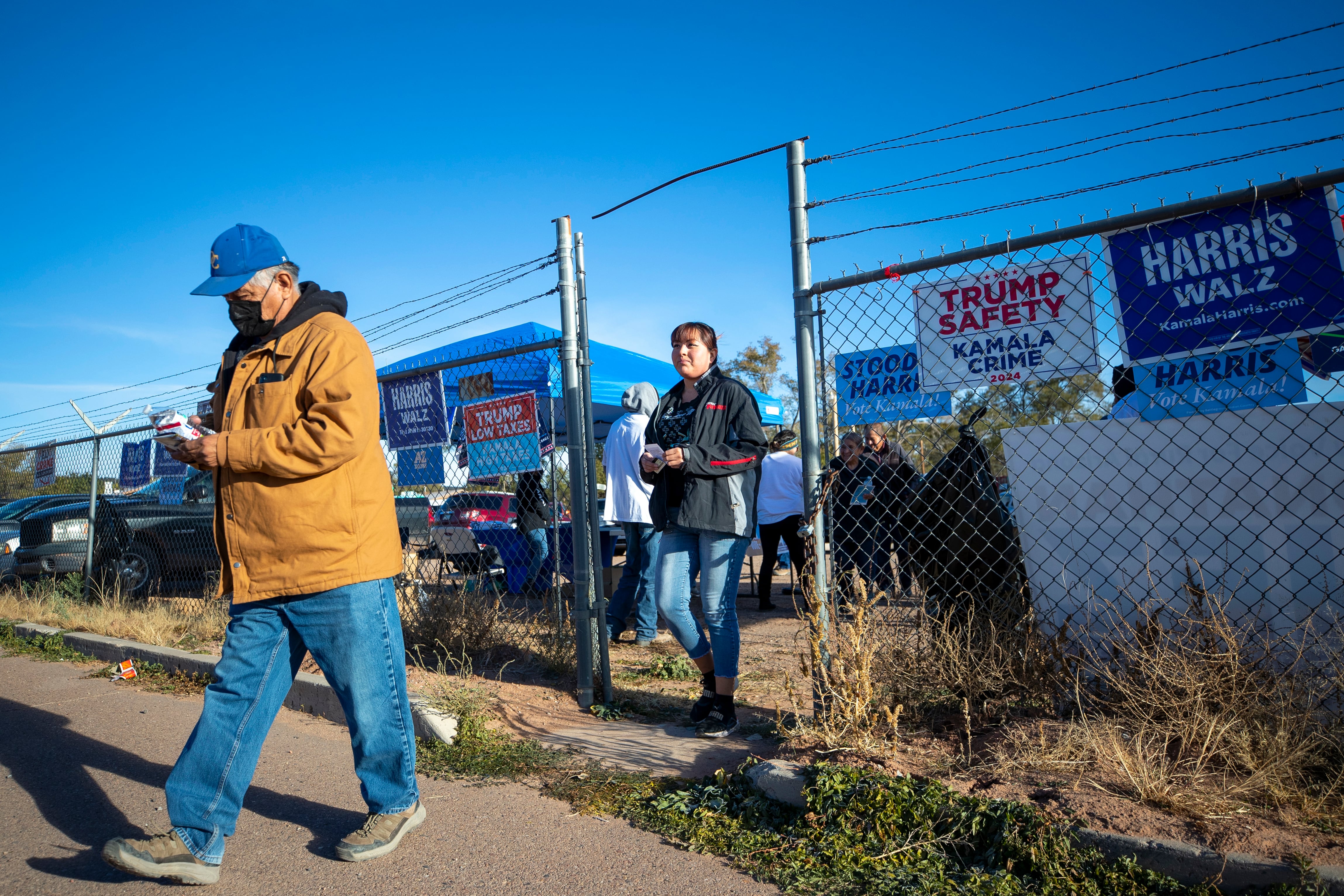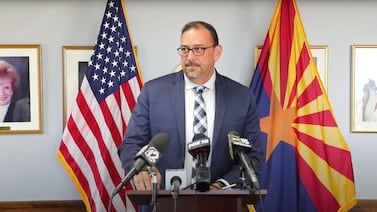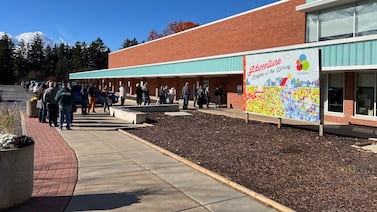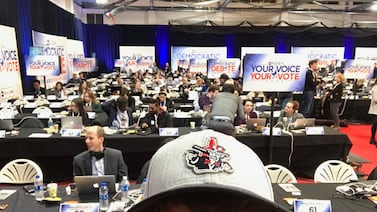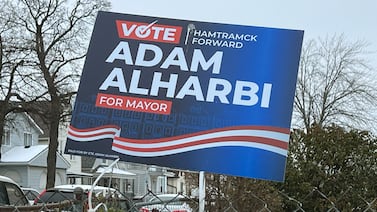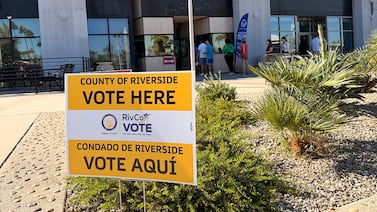Votebeat is a nonprofit news organization reporting on voting access and election administration across the U.S. Sign up for Votebeat Arizona’s free newsletter here.
Update, 7 p.m.: An Apache County Superior Court judge has ruled that nine locations must stay open until 9 p.m., two hours past the originally scheduled closing time.
Update: 5:15 p.m.: The Navajo Nation has filed a lawsuit in Apache County Superior Court asking that the polling places located on the reservation in the county stay open until 9 p.m., two hours past the scheduled closing time.
Update, 3:58 p.m.: This article has been updated with more details about Apache County’s technical voting problems.
Multiple polling places on the Navajo Nation faced technical issues on Tuesday morning that caused long lines.
Apache County, in the northeast corner of Arizona, was working to fix problems it was experiencing with its ballot-on-demand printers, Elections Director Rita Vaughan confirmed at around 10 a.m. Secretary of State Adrian Fontes said at 3 p.m. that most locations were now “up and running well,” but there were still some residual issues.
The Navajo Nation Department of Justice office received reports that the problems were causing long lines, and that voters were leaving because they did not want to wait, according to Katherine Belzowski, an assistant attorney general for the Navajo Nation Department of Justice.
The Navajo Nation Department of Justice is working on a potential lawsuit on behalf of the Navajo Nation to ask the courts to keep voting locations on the Navajo Nation in Apache County open longer on Tuesday because of the problems, Belzowski said.
The Navajo Nation is a closely watched area of the swing state, after high turnout from the area contributed to Joe Biden’s win in 2020. The Democratic vice presidential candidate, Minnesota Gov. Tim Walz, visited late last month to rally the vote.
Belzowski said that poll workers told some voters to leave and come back.
Vaughan said all voting locations had pre-printed emergency paper ballots available for voters, and no voters should have been turned away.
Belzowski, though, said that some locations ran out of these emergency ballots and voters were only able to cast ballots using an accessible voting device, which created long lines.
She said that there were two-to-three hour lines in some locations, and one voter filled out an affidavit stating that they waited 3.5 hours to vote.
In a Facebook post, Nygren, the Navajo Nation president, told voters to call the Native Vote Hotline — 1-888-777-3831 — if they were experiencing problems. It wasn’t immediately clear how many voters were affected. The county has 44 precincts and around 54,000 registered voters.
Jen Fifield is a reporter for Votebeat based in Arizona. Contact Jen at jfifield@votebeat.org.

